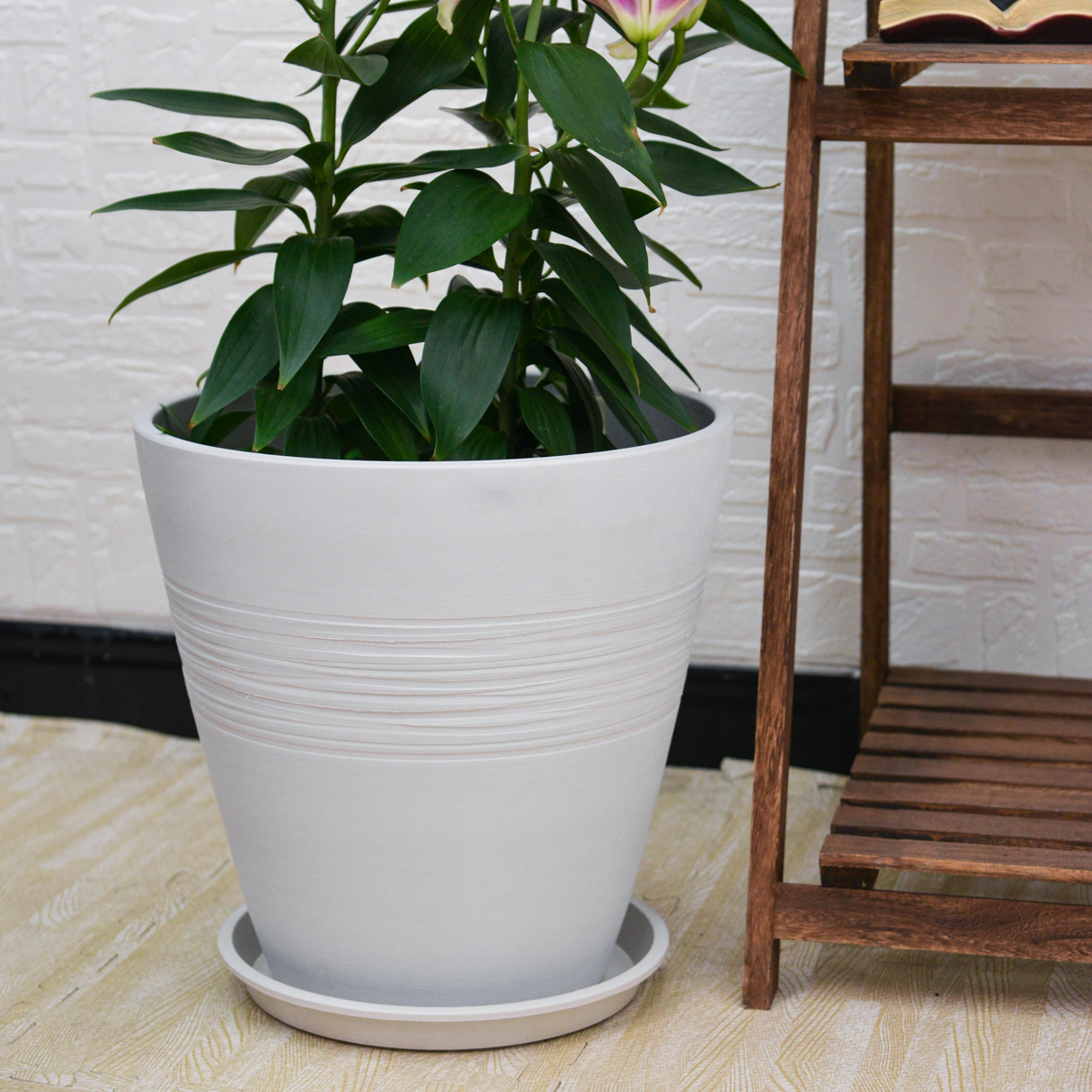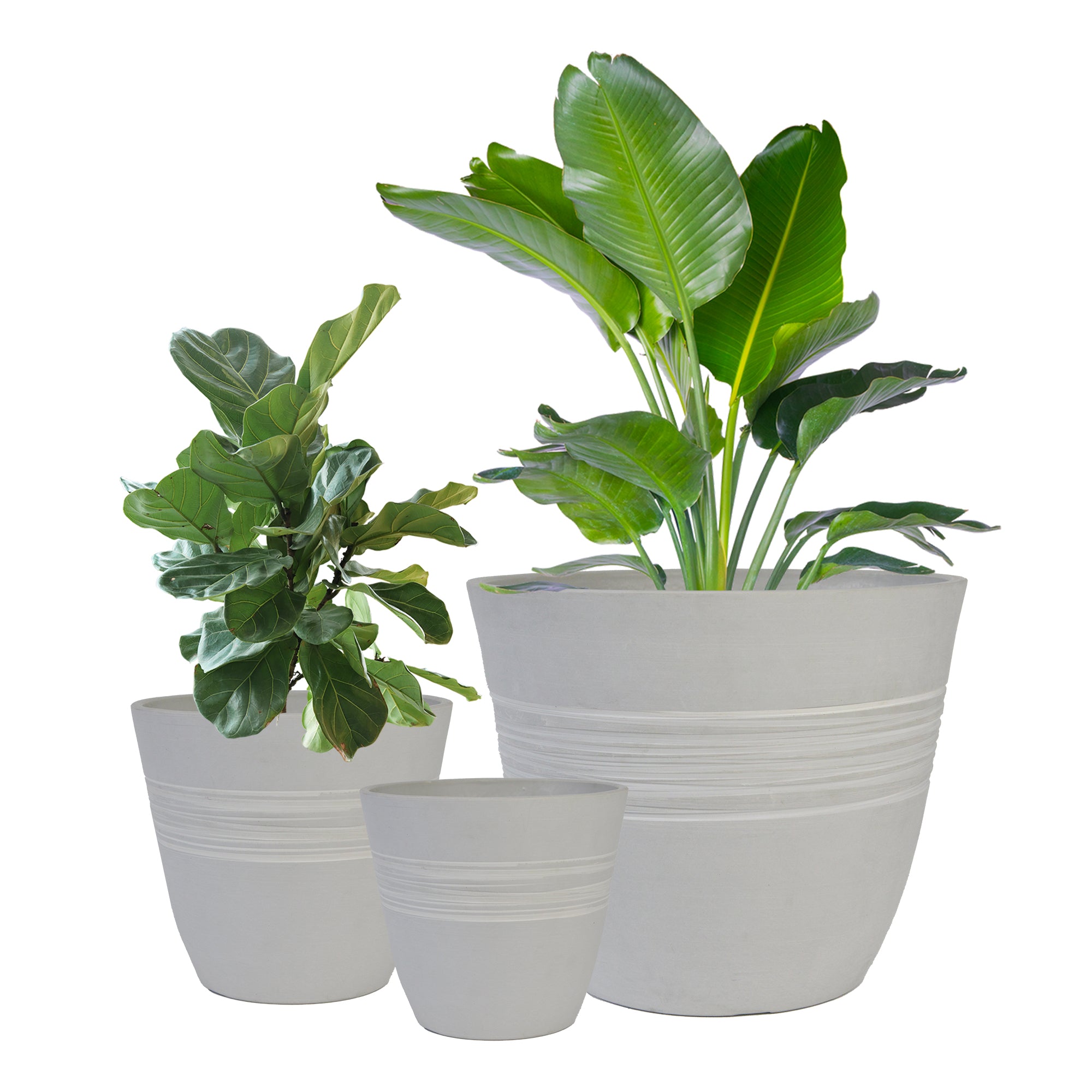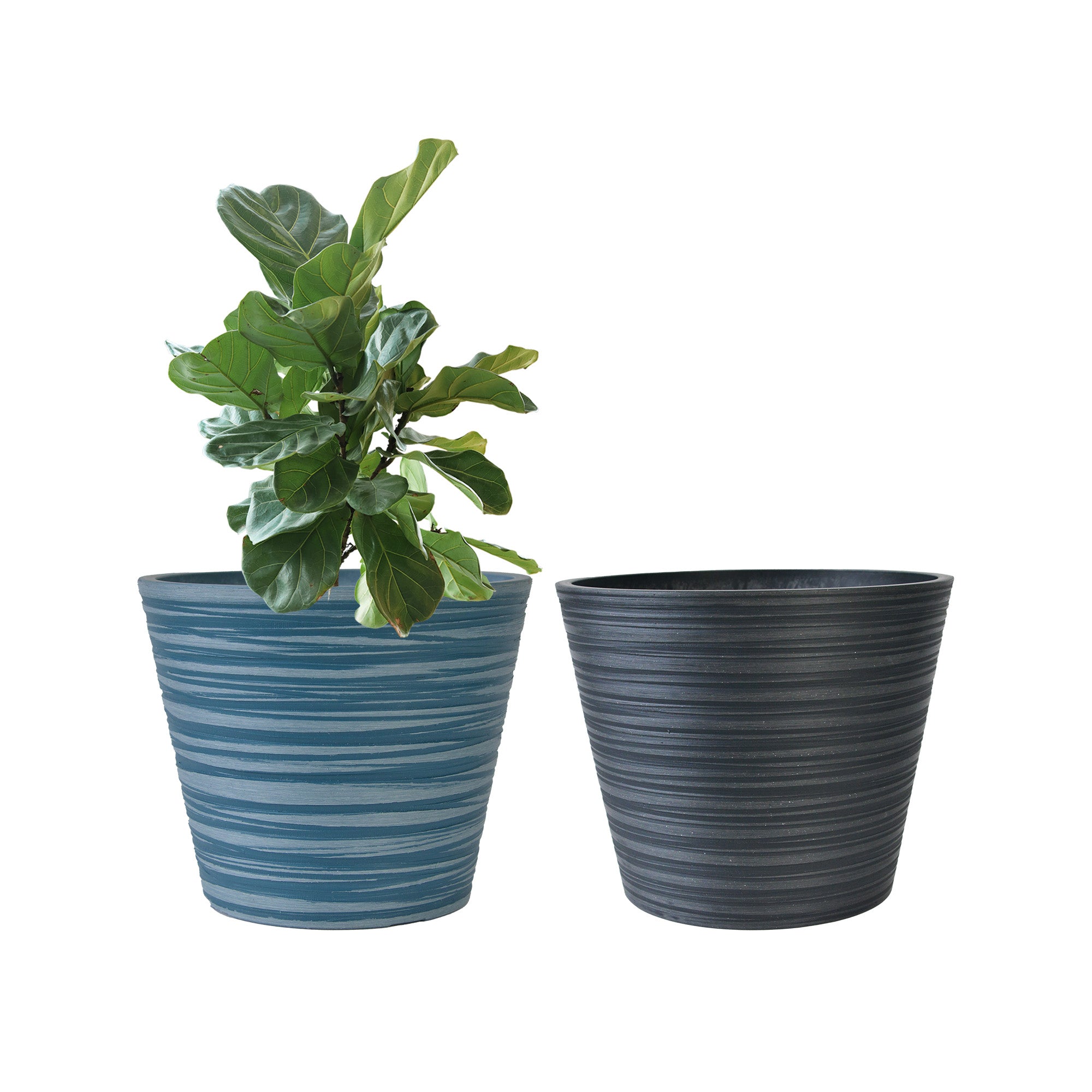African Violet Indoors: The Complete Guide to Growing Saintpaulia Ionantha at Home
Looking to brighten up your indoor spaces with charming, colorful blooms throughout the year? African Violets, scientifically known as Saintpaulia ionantha, are beloved houseplants prized for their velvety leaves and continuous display of delightful flowers in shades of purple, pink, white, and blue. These classic and relatively easy-to-grow plants, belonging to the Gesneriaceae family and native to Tanzania and Kenya, are perfect for adding a touch of cozy charm and vibrant color to your home. This comprehensive guide will provide you with everything you need to know to grow Saintpaulia ionantha indoors, from selecting the right varieties and pots to mastering essential care techniques for a thriving and ever-blooming African Violet in your home.
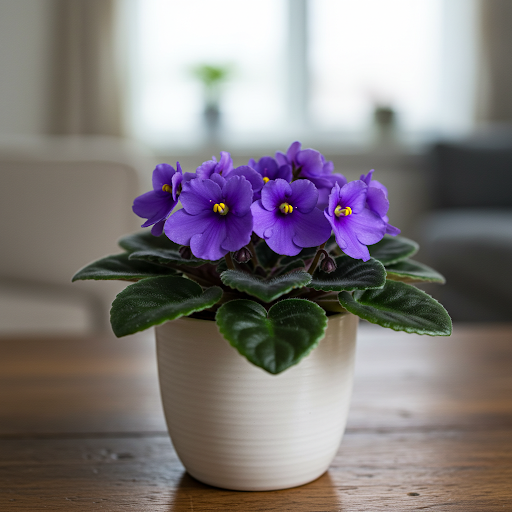
African Violets
What are African Violets (Saintpaulia ionantha)?
Saintpaulia ionantha, commonly known as African Violet, is the primary species within the Saintpaulia genus that is cultivated as a houseplant. Despite their name, they are not related to true violets (Viola). African Violets are celebrated for their soft, velvety, often slightly fuzzy leaves arranged in a rosette, and their prolific and long-lasting blooms. They come in a vast array of flower colors, shapes (single, double, ruffled), and leaf types (plain, ruffled, variegated), thanks to extensive hybridization. They are relatively small plants, making them ideal for windowsills, tabletops, and other indoor spaces.
Can African Violets (Saintpaulia ionantha) Thrive Indoors?
Yes, African Violets (Saintpaulia ionantha) thrive exceptionally well indoors and are specifically bred to be houseplants. With the right care, they can bloom almost continuously throughout the year, bringing color and joy to your home. Understanding their specific needs for light, watering, and humidity is key to success, but they are generally considered moderately easy to grow, rewarding consistent care with abundant blooms.
Ideal Indoor Growing Conditions for African Violets (Saintpaulia ionantha):
- African Violet Varieties for Indoors: The world of African Violets is incredibly diverse, with thousands of cultivars available. They are broadly categorized by flower type, color, leaf type, and size. Some popular and readily available African Violet varieties for indoor growing include:
- Standard African Violets: The most common size, typically 8-12 inches in diameter.
- Miniature African Violets: Smaller varieties, typically under 6 inches in diameter, ideal for small spaces and collections.
- Semi-Miniature African Violets: Intermediate size, between miniature and standard.
- Trailing African Violets: Have a more cascading or spreading growth habit, suitable for hanging baskets or elevated pots.
- Variegated Leaf Varieties: Leaves with patterns of white, cream, or pink.
- Fantasy Flowers: Blooms with streaks, spots, or splashes of multiple colors.
- Ruffled or Double Flowers: Blooms with extra petals, creating a fuller, more ruffled appearance.
- Light: African Violets need bright, indirect light to bloom well. They thrive in locations that receive bright, filtered sunlight for several hours per day. East-facing windows are often considered ideal, providing gentle morning sun. North or west-facing windows can also work if the light is bright but diffused. South-facing windows can be too intense, especially in the afternoon, and may require sheer curtains to filter the light and prevent leaf scorch. Insufficient light is a common reason for lack of blooming and can lead to leggy growth.
- Soil: African Violets need well-draining, slightly acidic soil that is also light and airy. Use a special African Violet potting mix, which is specifically formulated for their needs and typically contains peat moss, vermiculite, and perlite. Avoid using regular garden soil or heavy potting mixes, which can compact and retain too much moisture.
- Watering: African Violets prefer consistent moisture but are very sensitive to overwatering and soggy soil, as well as cold water. Water when the top of the soil feels slightly dry to the touch. Water from the bottom to avoid getting water on the leaves, which can cause spotting and rot. Place the pot in a shallow saucer of room temperature water and allow the plant to absorb water from the bottom for about 15-20 minutes, or until the top of the soil surface is moist. Then, remove the pot and allow excess water to drain completely. Alternatively, you can water carefully from the top using a watering can with a long, narrow spout, directing the water to the soil surface and avoiding the leaves. Use room temperature water or slightly lukewarm water – cold water can shock the roots and cause leaf spotting. Allow the soil to dry slightly between waterings, but don’t let it dry out completely. Watering frequency will vary depending on temperature, humidity, and pot type. Reduce watering slightly in winter when growth slows down.
- Temperature: Average room temperatures between 65°F to 75°F (18°C to 24°C) are ideal. African Violets are comfortable in typical household temperatures. Avoid exposing them to temperatures below 60°F (15°C) or sudden temperature fluctuations and cold drafts. They prefer warmth and consistent temperatures.
- Humidity: African Violets prefer moderate to high humidity, ideally around 50-60%. Dry air can lead to crispy leaf edges and bud drop. Increase humidity by:
- Pebble Trays: Place pots on trays filled with pebbles and water (water level below the pot base).
- Humidifier: Use a room humidifier, especially during dry seasons or winter heating.
- Grouping Plants: Grouping African Violets together can create a more humid microclimate.
- Terrariums (Open or Partially Closed): African Violets can be grown in open or partially closed terrariums, which help maintain humidity. Ensure some ventilation to prevent excessive moisture buildup.
Planting Your African Violet (Saintpaulia ionantha) Indoors:
- Starting from Potted Plants or Leaf Cuttings: The easiest way to start growing African Violets indoors is to purchase potted plants from nurseries, garden centers, or online retailers. They are also readily propagated from leaf cuttings.
- Propagation from Leaf Cuttings: African Violets are very easily propagated from leaf cuttings. Take healthy leaves with about 1-2 inches of stem. You can root leaf cuttings in water or directly in moist African Violet potting mix. For water rooting, place the leaf cutting in a small glass of water, ensuring only the stem is submerged, and place in a warm, bright location (but out of direct sun). Roots will typically develop in a few weeks. For soil rooting, insert the leaf stem into moist African Violet mix and cover with a plastic bag or humidity dome to maintain moisture.
- Planting Time: African Violets can be planted or repotted at any time of year indoors. Spring or early summer, at the start of the growing season, is generally recommended for optimal establishment and growth.
Choosing the Right Pots for Indoor African Violets (Saintpaulia ionantha):
- Suitable Pot Types: Select pots with good drainage and that are appropriately sized. Plastic or ceramic potsare commonly used. Terracotta pots can also be used, but may dry out faster, requiring more frequent watering. Drainage is more critical than pot material for African Violets.
- Drainage: Excellent drainage is essential for African Violets to prevent root rot. Ensure your chosen pot has drainage holes at the bottom. You can also add a thin layer of gravel or pot shards at the base of the pot to improve drainage further.
- Pot Size: Choose a pot that is proportionate to the size of the plant. African Violets have relatively shallow root systems and prefer to be slightly root-bound. Overpotting (using too large a pot) is a common mistake and can lead to excess moisture retention and root rot. Shallow pots are generally preferred over deep pots. As a general rule, the pot diameter should be about 1/3 the diameter of the leaf span. For standard African Violets, pots in the 4-6 inch range are common. Miniature varieties need even smaller pots.
- Potting Mix: Use a special African Violet potting mix as described earlier.
Essential Care Tips for Ever-Blooming Indoor African Violets (Saintpaulia ionantha):
- Watering Technique: “Bottom Watering is Best”. Water from the bottom to avoid wetting leaves. Allow the soil to dry slightly between waterings, but never completely dry out. Use room temperature or lukewarm water. Avoid overwatering.
- Light is Key to Blooming: Provide bright, indirect light. Insufficient light is the most common reason for lack of blooms. Supplement natural light with grow lights if needed, especially in winter or low-light homes, to encourage consistent blooming.
- Fertilizing for Continuous Blooms: African Violets are moderate feeders and benefit from regular fertilization to support their continuous blooming. Fertilize every 2-4 weeks during the blooming season (year-round for indoor African Violets) with a balanced liquid fertilizer diluted to half strength, or a fertilizer specifically formulated for African Violets. Use a fertilizer higher in phosphorus to encourage blooming. Follow package instructions. Reduce fertilizing slightly in winter if growth slows down.
- Humidity Management: Maintain moderate to high humidity. Use pebble trays, humidifiers, or group plants as described earlier.
- Deadheading Spent Flowers: Remove spent or faded flowers (and their stems) promptly by gently pinching or cutting them off at the base. This encourages the plant to produce more blooms and maintains a tidy appearance.
- Leaf Cleaning: Dust can accumulate on the velvety leaves. Clean leaves gently with a soft brush or a very soft, dry cloth. Avoid getting the leaves wet if possible, or ensure they dry quickly in a warm, airy place if they do get damp.
- Temperature Consistency: Maintain consistent, warm temperatures and avoid cold drafts or sudden temperature changes.
- Repotting Schedule: Repot African Violets every 1-2 years, or when they become root-bound or the potting mix is depleted. Repot in spring or early summer. Repotting into fresh African Violet mix is beneficial for their health and blooming.
- Pest and Disease Control: Monitor African Violets for pests like mealybugs, cyclamen mites, and aphids. Fungal diseases like powdery mildew and crown rot can occur, especially with poor air circulation or overwatering. Ensure good air circulation, avoid overcrowding plants, and avoid overwatering. Treat any pest infestations or diseases promptly with insecticidal soap, neem oil, or appropriate fungicides if needed, following product instructions carefully and prioritizing options safe for African Violets.
Popular African Violet Flower Colors and Types:
- Purple and Blue: Classic African Violet colors, many shades and variations.
- Pink: From pale pink to vibrant fuchsia.
- White: Pure white or creamy white blooms.
- Red and Burgundy: Rich red and deep burgundy shades.
- Bicolor and Multicolor: Flowers with two or more colors, often in patterns or edges.
- Single Flowers: Five petals, simple and classic.
- Double Flowers: Extra petals, creating a fuller, rose-like appearance.
- Ruffled Flowers: Petal edges are ruffled or frilly.
- Star-Shaped Flowers: Petals are more pointed and star-like.
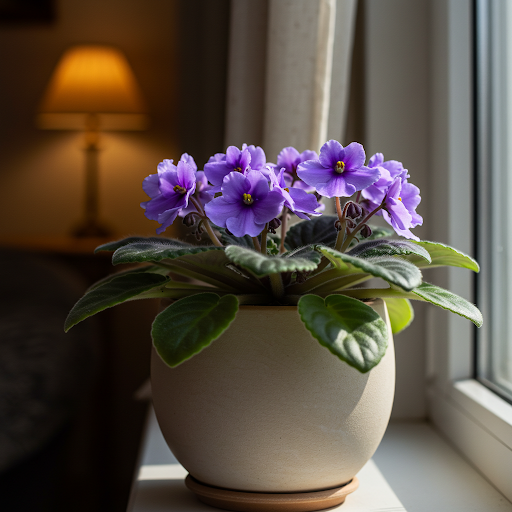
African Violets
In Summary:
Growing African Violets (Saintpaulia ionantha) indoors is a delightful and rewarding experience, bringing continuous color and classic charm to your home. Their relatively easy care, coupled with their ability to bloom year-round, makes them a beloved houseplant for generations. By providing bright, indirect light, watering from the bottom with room temperature water, using special African Violet potting mix, and maintaining consistent care, you can easily cultivate thriving and ever-blooming African Violets indoors and enjoy their cheerful presence in your living spaces.
For more detailed botanical information and to explore the vast world of African Violet cultivars and species, you can visit the Wikipedia page on Saintpaulia.
Important Note: African Violets (Saintpaulia) are considered non-toxic to humans and pets, making them a safe choice for households with children and animals. Their delicate leaves and flowers are easily damaged, so handle them gently.
KC2-GS
By greenship|2024-08-16T06:30:21+00:00August 16, 2024|Categories: Hand-carving Series|
11V
By greenship|2024-08-13T03:05:48+00:00August 13, 2024|Categories: Hand-carving Series|
HS
By greenship|2024-08-13T06:45:17+00:00August 13, 2024|Categories: Hand-carving Series|
KC2-21G
By greenship|2024-08-13T06:19:08+00:00August 13, 2024|Categories: Hand-carving Series|
Plant Pots 6 inch 8 inch 12 inch for Indoor Outdoor Plants, Set of 3 Modern Decorative Planter with Drainage Hole, Decorative Flower Pots
By greenship-seo|2025-04-10T06:38:40+00:00January 16, 2025|Categories: Hand-carving Series|Tags: Decorative Flower Pots|
Planter 5 in W / 8 in W / 12 in W or Indoor Outdoor Plants, Modern Decorative Plant Pots with Drainage Hole, Decorative Flower Pots
By greenship-seo|2025-04-10T06:37:58+00:00January 16, 2025|Categories: Hand-carving Series|Tags: Decorative Flower Pots|

